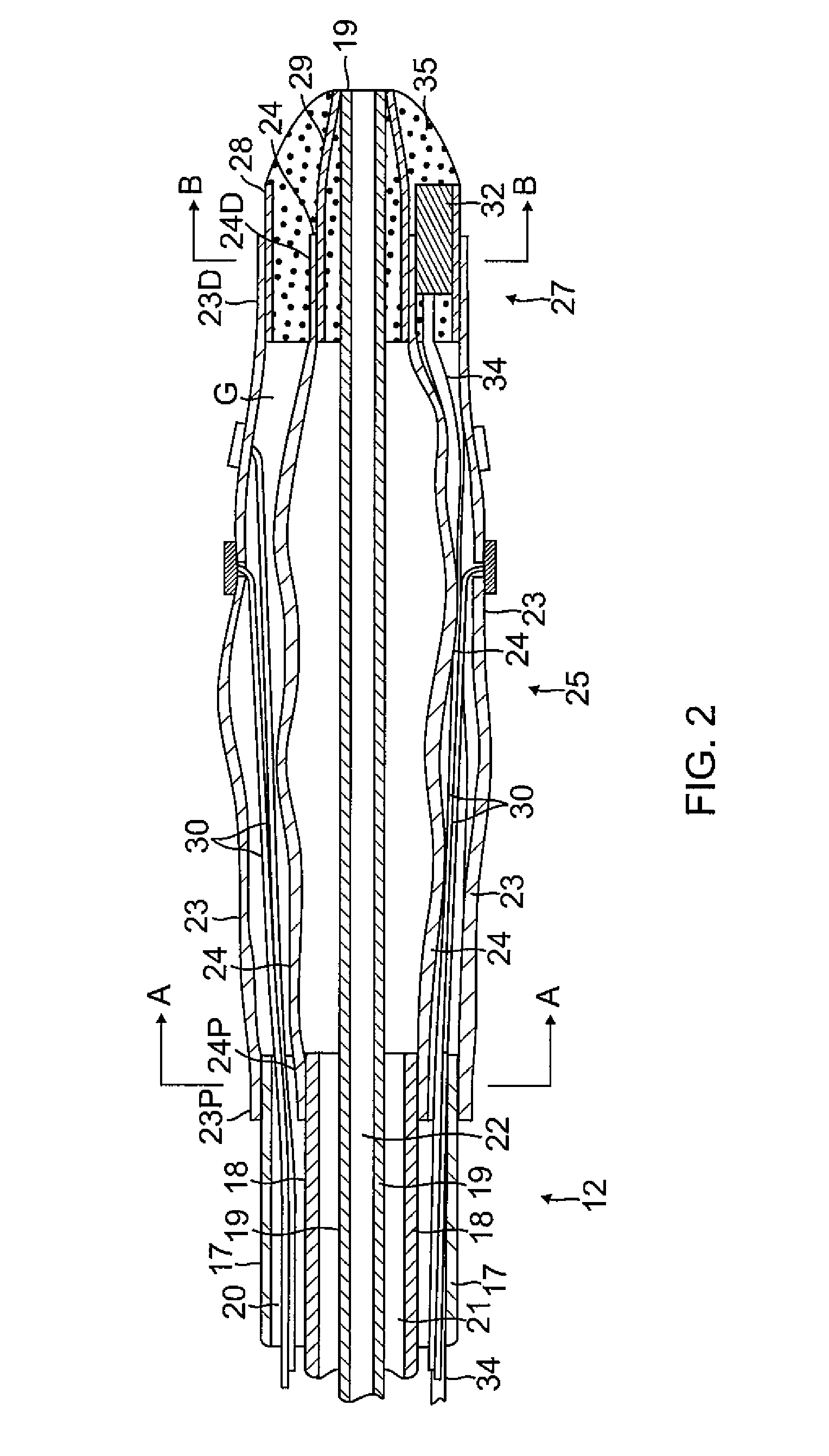Multi-electrode balloon catheter with circumferential and point electrodes
a multi-electrode, electrode-based technology, applied in the field of electrode-based catheters, can solve the problems of cardiac arrhythmia, inability to adapt to tissue contact over an area or at multiple locations, and the general circular portion may not exert uniform pressure along its length, so as to reduce the number of different catheters and facilitate workflow. , the effect of ensuring the placement of electrodes
- Summary
- Abstract
- Description
- Claims
- Application Information
AI Technical Summary
Benefits of technology
Problems solved by technology
Method used
Image
Examples
Embodiment Construction
[0049]With reference to FIG. 1, the invention is directed to a catheter 10 having a balloon electrode assembly 25 that can inflate and deflate as needed for mapping and / or ablation of a tubular region of the heart, including a pulmonary vein of the left atrium.
[0050]The catheter 10 comprises an elongated catheter body 12, a control handle 16 at a proximal end of the catheter body 12, and the balloon electrode assembly 25 at the distal end of the catheter body 12.
[0051]As shown in FIGS. 2 and 2A, the catheter body 12 comprises an elongated tubular construction having an outer tube 17 with a single lumen 21, an inner tube 18 with a single lumen 20, and a guidewire tube 19 with a guide wire lumen 22. The tubes 17, 18 and 19 are coaxial, with the inner tube 18 extending through the lumen 21 of the outer tube 17, and the guidewire tube 19 extending through the lumen 20 of the inner tube 18. The tubes 17, 18 and 19 are flexible, i.e., bendable, but substantially non-compressible along its...
PUM
 Login to View More
Login to View More Abstract
Description
Claims
Application Information
 Login to View More
Login to View More - R&D
- Intellectual Property
- Life Sciences
- Materials
- Tech Scout
- Unparalleled Data Quality
- Higher Quality Content
- 60% Fewer Hallucinations
Browse by: Latest US Patents, China's latest patents, Technical Efficacy Thesaurus, Application Domain, Technology Topic, Popular Technical Reports.
© 2025 PatSnap. All rights reserved.Legal|Privacy policy|Modern Slavery Act Transparency Statement|Sitemap|About US| Contact US: help@patsnap.com



